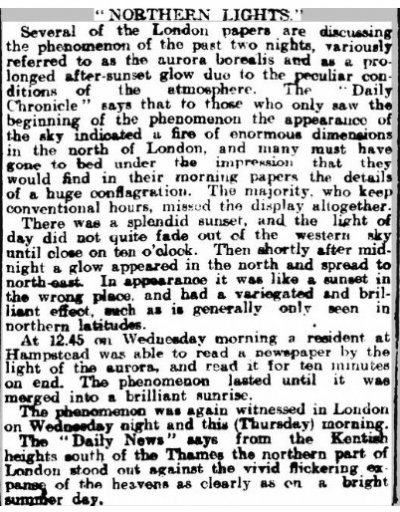I can't think of anything that might do that - unless there was some trace of the explosion left high up in the upper atmosphere, perhaps as some glowing particulate matter raining down very slowly.
Or particulate matter hurled into the atmosphere which was scattering sunlight from sunlit areas to the darkened areas of the planet?
Maybe. Which might indicate a high concentration of metal, perhaps?
Long story short ...
Given the timing and the planet's orientation, it's almost universally presumed the Tunguska afterglow was reflected sunlight from 'way over the horizon.
Earlier hypotheses emphasized the notion that the airburst near the Siberian surface blew considerable debris high into the stratosphere (analogous to what happened during the Krakatoa explosion). This approach sounds straightforward, but there are problems validating it using (e.g.) simulations. Most particularly, there's been no convincing explanation for how dust blown upward off the surface could result in a cloud layer high enough (at or beyond the edge of space) and fast enough to reflect sunlight as far and in as widespread a manner as was reported in 1908.
The most recent analyses and simulations point to two more probable conclusions:
- the Tunguska afterglow was caused by a radical instance of a noctilucent cloud (NLC); and ...
- the material comprising the NLC mainly, if not wholly, originated from aloft rather than from the ground.
It wasn't until the 1990s that data and observations from space shuttle re-entries demonstrated NLCs could be generated by objects incoming from outside the atmosphere without any interaction with the earth's surface (e.g. kicking up dust) or troposphere.
The latest hypothesis is that the explosions during the Tunguska object's descent / incursion, combined with the huge final airburst, blew atmospheric moisture and the object's own or affiliated dust clear out into space as a plume which slowly settled back into the atmosphere. As the plume settled back into the atmosphere it created huge NLCs floating at the very edge of space.
See, for example, this presentation by a scientist specializing in near-earth objects, earth defense, and impacts / impactors:
https://asteroidday.org/resources/asteroid-learning/meteor-marvelling-noctilucent-clouds-and-us/



